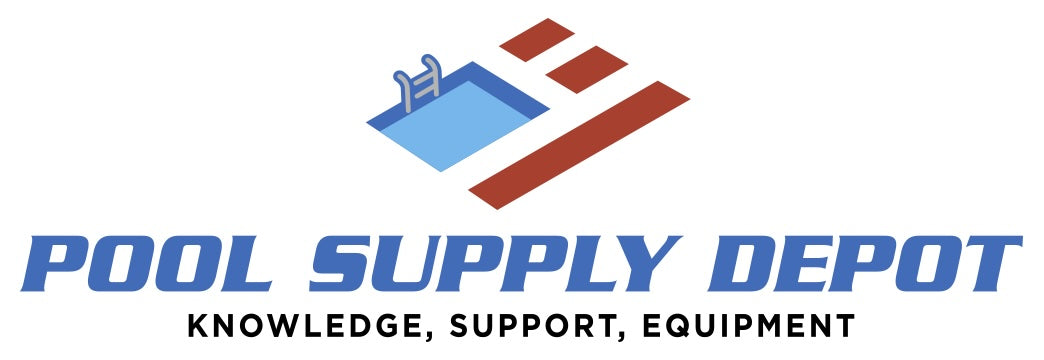Why isn’t my salt system producing chlorine?
You glance at your pool, the water looks a little dull, and your salt system says “Low Output” or “Check Cell.” You add more salt, but nothing changes. Sound familiar?
Don’t worry — you’re not alone. This is one of the most common pool issues we hear about at Pool Supply Depot. A salt system that’s not generating chlorine doesn’t always mean it’s broken. In fact, it’s usually reacting to something in your pool environment that’s off balance.
Let’s walk through the most common reasons your salt chlorinator stops producing chlorine — and how you can get it working again before calling for service.
1. Low salt levels (or too much salt)
Your salt system needs the right balance — not too little, not too much.
If the salt level in your pool is below the manufacturer’s recommended range (typically 2,700–3,400 ppm), the cell can’t create chlorine effectively. But here’s the twist — adding too much salt can be just as bad. High salinity can confuse sensors or even shut the system down for safety.
What to do:
-
Use a reliable digital test kit or strips to measure salt levels.
-
Never rely solely on the control panel reading — those can drift over time.
-
If salt is low, add the correct amount per your pool size. If it’s high, dilute by draining and refilling part of your pool.
At Pool Supply Depot, we often see over-salting after a heavy refill or storm — so always test before adding more.
2. Dirty or scaled salt cell
If your salt levels are right but your system still won’t produce chlorine, check the salt cell. It’s the heart of your generator, and over time, minerals and calcium deposits build up on the metal plates.
In Nevada’s hard water, this happens fast. When scale forms, it blocks the electric current that converts salt into chlorine — leaving your system running, but not generating.
How to fix it:
-
Turn off power.
-
Remove the salt cell and inspect for white or crusty buildup.
-
Rinse with a mild acid solution (1 part muriatic acid to 4 parts water) for a few minutes — then rinse again thoroughly with clean water.
Pro Tip: Clean only when needed. Over-cleaning can shorten cell life.
Pool Supply Depot carries replacement cells for Pentair, Jandy, and Hayward systems if yours is heavily scaled or nearing the end of its lifespan (3–5 years on average).
3. Incorrect water chemistry
Even if your salt system is running, poor water balance can prevent chlorine from forming or staying active.
Key levels to check:
-
Cyanuric Acid (CYA): Should be 50–80 ppm. Too low and chlorine burns off in sunlight; too high and chlorine becomes trapped.
-
pH: Ideal range is 7.4–7.6. High pH reduces chlorine effectiveness.
-
Calcium Hardness: In Nevada, this often runs high, which can cause scaling inside the salt cell.
If your chlorine output keeps dropping, there’s a good chance your water balance is the problem — not the system.
What to do: Test and rebalance weekly. A properly balanced pool helps your generator maintain steady chlorine levels with less strain.
4. Worn-out salt cell
Like any equipment, salt cells wear out over time. They contain metal plates that degrade slowly as they produce chlorine, eventually losing conductivity.
You might notice:
-
“Low Salt” or “Check Cell” warnings even when salt is fine.
-
Chlorine output dropping despite correct chemistry.
-
The system cycling off frequently.
If your salt cell is 4–6 years old, it may be nearing the end of its life.
At Pool Supply Depot, we recommend checking your brand’s replacement indicator (some systems track production hours). When it’s time to replace, match the cell to your system model — we carry OEM and compatible replacements for most major brands.
5. Temperature or flow issues
Here’s something many pool owners don’t realize: salt systems don’t generate chlorine efficiently in cold water. Most shut off automatically below 60°F.
In the Nevada desert, that means chlorine production drops sharply during winter and early spring.
Also, if water flow is too low — from a dirty filter or slow pump speed — the cell won’t activate.
Quick fixes:
-
Check your control panel for “Cold Water” or “Low Flow” warnings.
-
Clean your filter and ensure your pump runs at adequate speed for your system.
-
During colder months, supplement with liquid chlorine if needed.
6. Faulty sensors or control board
If all else checks out — salt, chemistry, temperature, and flow — your control board or internal sensors may be failing. These components monitor readings and send signals to the cell to turn on or off.
Over time, electrical wear, corrosion, or power surges can cause faulty readings.
What to do:
If your system displays incorrect data or error messages that won’t clear, it’s time for professional diagnosis. Pool Supply Depot can test the power output and replace individual parts rather than the whole system — saving you hundreds.
What’s the takeaway?
A salt system that stops producing chlorine doesn’t always mean a major failure. In most cases, it’s reacting to something simple: low salt, dirty cell, unbalanced water, or cold temperatures.
By learning to spot these patterns early, you can prevent cloudy water, extend your system’s life, and avoid unnecessary service calls.
And if you’ve checked everything but your salt system still isn’t generating chlorine — don’t worry. Pool Supply Depot can help you test, diagnose, and source the right replacement cell or component for your system.
We’ll make sure your pool stays clean, balanced, and swim-ready — no matter the season.




Comments (0)
There are no comments for this article. Be the first one to leave a message!